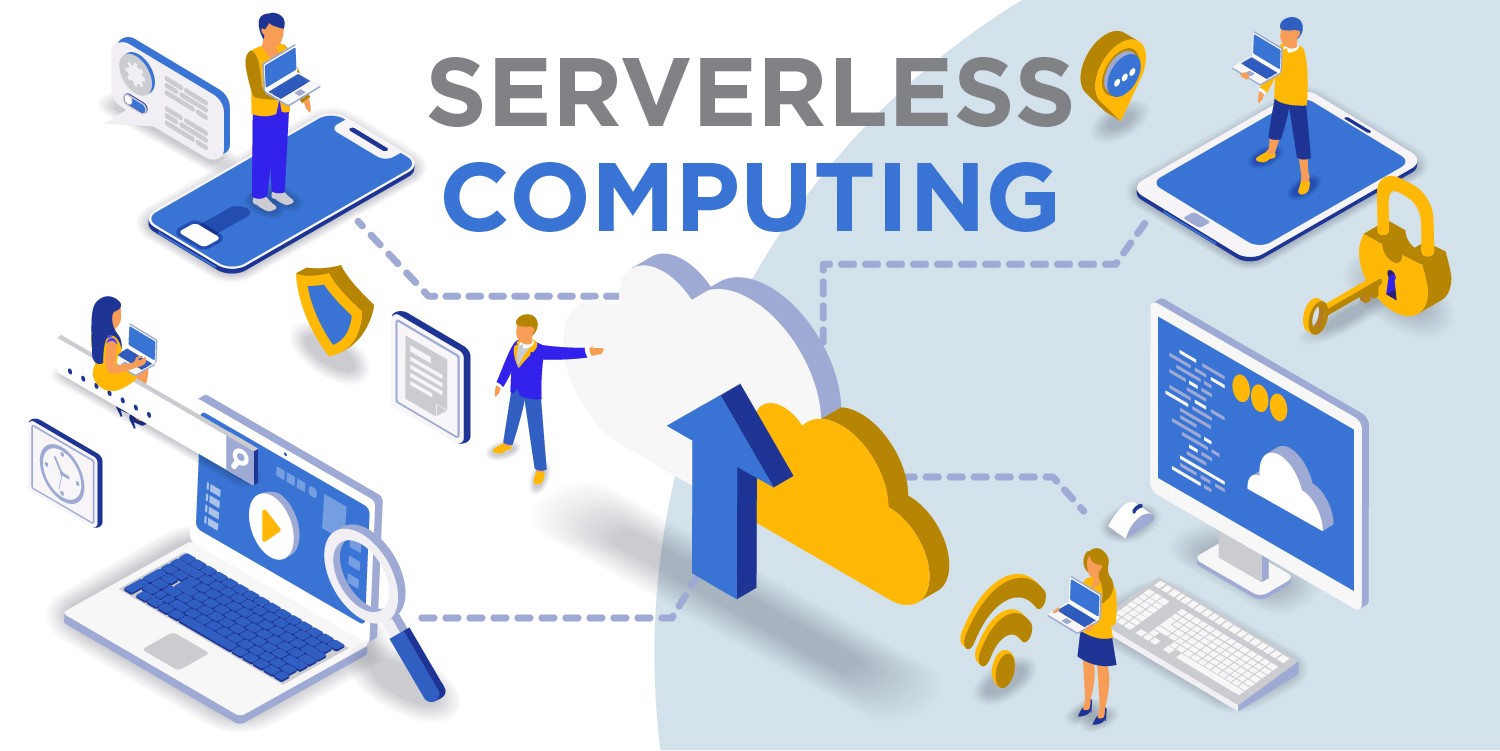In the fast-paced world of web development, delivering scalable, cost-effective, and high-performance applications is more important than ever. One technology that has gained significant traction in recent years is serverless computing. Serverless computing allows developers to build and run applications without managing the underlying infrastructure, enabling faster development cycles, reduced costs, and improved scalability.
As we move further into 2025, the adoption of serverless computing is accelerating, offering new possibilities for innovation and efficiency. In this article, we’ll explore the role of serverless computing in modern web development, its key benefits, and how businesses can leverage this technology to stay ahead of the competition.
What is Serverless Computing?
Serverless computing is a cloud computing model where the cloud provider manages the infrastructure, allowing developers to focus solely on writing code. In a serverless architecture, applications are broken down into small, event-driven functions that are executed in response to specific triggers. These functions are stateless, meaning they do not retain any data between executions.
Key characteristics of serverless computing include:
- No Server Management: Developers do not need to provision, scale, or manage servers.
- Event-Driven: Functions are triggered by events, such as HTTP requests, database changes, or file uploads.
- Pay-Per-Use: Businesses pay only for the compute time used, making it a cost-effective solution.
- Scalability: Serverless platforms automatically scale functions based on demand.
Why is Serverless Computing Important in [2025]?
1. Faster Time-to-Market
Serverless computing eliminates the need for infrastructure management, allowing developers to focus on writing code and delivering features faster.
2. Cost-Effectiveness
With serverless computing, businesses pay only for the compute time used, reducing costs associated with idle resources.
3. Scalability
Serverless platforms automatically scale functions based on demand, ensuring optimal performance during traffic spikes.
4. Simplified Operations
By offloading infrastructure management to the cloud provider, serverless computing simplifies operations and reduces the burden on development teams.
5. Focus on Core Business Logic
Serverless computing allows developers to focus on building core business logic rather than managing infrastructure, fostering innovation and creativity.
Key Benefits of Serverless Computing
1. Reduced Operational Overhead
Serverless computing eliminates the need for server management, reducing operational overhead and allowing developers to focus on writing code.
- No Server Provisioning: Developers do not need to provision or manage servers.
- Automatic Scaling: Functions scale automatically based on demand.
2. Cost-Effectiveness
Serverless computing follows a pay-per-use pricing model, ensuring that businesses pay only for the compute time used.
- No Idle Costs: Businesses are not charged for idle resources.
- Predictable Costs: Pay-per-use pricing provides predictable and transparent costs.
3. Improved Scalability
Serverless platforms automatically scale functions based on demand, ensuring optimal performance during traffic spikes.
- Elastic Scaling: Functions scale up or down based on traffic.
- High Availability: Serverless platforms ensure high availability and reliability.
4. Faster Development Cycles
Serverless computing accelerates development cycles by eliminating the need for infrastructure management and enabling rapid prototyping.
- Rapid Prototyping: Developers can quickly build and test new features.
- Continuous Deployment: Serverless platforms support continuous deployment, enabling faster delivery of updates.
5. Enhanced Security
Serverless platforms provide built-in security features, such as encryption and access control, ensuring that applications are secure from the start.
- Built-In Security: Cloud providers handle security at the infrastructure level.
- Compliance: Serverless platforms comply with industry standards and regulations.

How to Implement Serverless Computing
1. Choose a Serverless Platform
Select a serverless platform that meets your needs. Popular options include:
- AWS Lambda: Amazon’s serverless computing platform.
- Google Cloud Functions: Google’s serverless computing platform.
- Azure Functions: Microsoft’s serverless computing platform.
2. Define Functions
Break down your application into small, event-driven functions. Each function should perform a specific task and be triggered by a specific event.
- Event Sources: Define the events that will trigger your functions, such as HTTP requests, database changes, or file uploads.
- Stateless Functions: Ensure that functions are stateless and do not retain data between executions.
3. Develop and Test
Develop your functions using the programming languages and tools supported by your serverless platform. Test your functions to ensure they work as expected.
- Local Testing: Use tools like AWS SAM or Serverless Framework to test functions locally.
- Automated Testing: Implement automated testing to catch bugs early.
4. Deploy and Monitor
Deploy your functions to the serverless platform and monitor their performance. Use monitoring tools to track metrics like execution time, error rates, and resource usage.
- Deployment Tools: Use tools like AWS CodeDeploy or Google Cloud Build to automate deployments.
- Monitoring Tools: Use tools like AWS CloudWatch or Google Cloud Monitoring to monitor function performance.
5. Optimize and Iterate
Continuously optimize your functions based on performance data and user feedback. Iterate and improve your application over time.
- Performance Optimization: Optimize function code and configurations for better performance.
- Feedback Loops: Gather feedback from users and stakeholders to drive improvements.
Real-World Examples of Serverless Computing
1. Netflix
Netflix uses AWS Lambda to handle various backend tasks, such as video encoding and recommendation algorithms. This allows Netflix to scale its services efficiently and deliver a seamless streaming experience.
2. Coca-Cola
Coca-Cola uses Google Cloud Functions to power its vending machine platform, enabling real-time data processing and analytics. This allows Coca-Cola to optimize its operations and improve customer experiences.
3. Nordstrom
Nordstrom uses AWS Lambda to build and deploy microservices for its e-commerce platform. This enables Nordstrom to deliver new features quickly and efficiently.
Conclusion
Serverless computing is transforming modern web development by offering scalability, cost-effectiveness, and faster development cycles. By eliminating the need for infrastructure management, serverless computing’s allows developers to focus on building core business logic and delivering high-quality applications.
As we move further into 2025, the adoption of serverless computing’s is expected to grow, offering new opportunities for innovation and efficiency. By embracing this technology, businesses can build scalable, reliable, and user-friendly web applications that meet the demands of today’s digital landscape.
Read More: The Role of Edge Computing in Modern Web Development
High-Authority External Links:
- AWS Lambda Documentation – A comprehensive resource for understanding and implementing AWS Lambda.
- Google Cloud Functions Guide – A guide to building and deploying serverless functions on Google Cloud.




